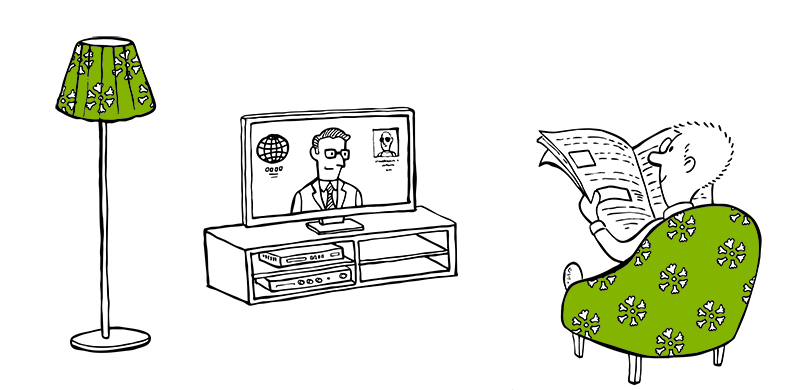
Reviewed at the dnaunion Press Conference: Price Change Analysis of Six Essential Household Commodities
Naser Pashapour Nikoo presented a research report on six essential household commodity groups along with their impact on marketing activities and consumer choices.
Based on this report, during the dnaunion Group press conference held on Tuesday, August 15, with the presence of mass media journalists, Naser Pashapour Nikoo, CEO of the group, Mohammad Mousavi, CEO of Eshareh Image Communication Agency, and Kamyar Emami, CEO of Today Market and Media Research Company (emrc), presented the report and answered the questions posed by journalists.
Edible Oil Market Report (Solid and Liquid): Pashapour stated: The report presented is based on price fluctuations, price control discussions, and increases. Regarding edible oil, a point-to-point comparison from April 2021 to April 2022 showed no significant price increase. However, from June 2021 to June 2022, about a 292% price increase per kilogram of edible oil (both liquid and solid) was reported.
This did not lead to a reduction in advertising volume. In fact, from Spring 2021 to Spring 2022, there was a 252% increase in advertising expenditure. This means that with rising prices, manufacturers increased advertising to maintain their market share. This behavior led to a 13% increase in consumer tendency toward purchasing solid oil in 2022, while it was only 4% in 2021. The research results show consumer preference for solid oil due to its lower price compared to liquid oil.
Regarding packaging, a 91% reduction in the purchase of smaller packages was reported, ultimately indicating increased purchases of larger packaged solid oil. Another interesting point about oil is that despite a 397% price increase (from 10,000 to 25,000 tomans per package), the best-selling package, with a 138% increase, still showed a rise in sales. In June, consumer purchase volume compared to total consumption increased, likely due to stockpiling beyond normal consumption levels.
Bread Market Report: Pashapour emphasized that the report on bread only covers those sold in retail stores and not bakery bread. According to the point-to-point report from May 2021 to May 2022, prices increased by approximately 74%, and in June of the same year, by 90%. Research shows that bread experienced a smaller price increase compared to oil. There was no significant change in TV advertising for bread.
The four best-selling items (with 150%, 110%, 116%, and 127% increases) show that top sellers had greater price increases, and consumers were more inclined to buy bread from bakeries.
Cheese Market Report: Pashapour reported a 44% increase in cheese sales. In May, the price increased by 103%, and in June by 122%. Consumer behavior in this segment did not focus on packaging but rather on product type—specifically white cheese, which showed greater popularity.
Items showed price increases of 106%, 104%, and 108%, while white cheese rose by 136%. He added that cheese advertising increased by 562% from Spring 2021 to Spring 2022. This reflects manufacturers’ concern about market share and sales volume.
The report also showed white cheese price increases between 86% and 181%, and a decline in sales volume, indicating lower consumer purchases—except for Pegah brand white cheese.
Pasta and Spaghetti Market Report: Regarding pasta, the report shows no difference in packaging types. Growth was 59% in May 2021, 138% in May 2022, and 154% in June. There was no shift in packaging preference, although it would have been better if manufacturers offered 2kg or 4kg packages, which didn’t happen.
Compared to bread’s 90% price increase, pasta experienced more growth, likely due to flour type differences. Bread uses local flour, while pasta flour is influenced by currency exchange rates.
Pashapour also noted that pasta advertising saw a 370% budget increase. For the top four items, price increases were 168%, 155%, 175%, and 181%. Overall, purchases either decreased or remained stable.
Baby Diaper Market Report: Pashapour stated that the baby diaper market saw a 534% increase in advertising budget, though this was due to higher advertising rates, not frequency.
Top-selling items had price increases of 2.8%, 42%, 5.6%, and 9.3%. Consumption levels remained mostly unchanged, with the highest changes being 13% and 18%.
Detergent Market Report: Pashapour added: Dishwashing liquid, a commonly used detergent, was assessed in this research. Prices increased by about 30% in April 2021 to the same time in 2022, and by 38% in June. Advertising budgets rose by 270%.
Top-selling items showed price increases of 36%, 45%, 36%, and 28%, respectively. No major change in consumption behavior was observed, except for the Goli company, which saw a 39% increase in sales during the specified timeframe.
The CEO of dnaunion group also announced the launch of a financial market innovation and acceleration center in Iran. He added: In recent years, fintech (financial technology) has become prominent in Iran. At dnaunion, we focus on two areas: MarTech (marketing technology) and AdTech (advertising technology), with a greater emphasis on marketing. We have received an operational license from the Vice Presidency for Science and Technology and have already undertaken internal group initiatives.
He added: Acceptance for those with innovative ideas will occur in two stages: the first in September at the “Av” acceleration center, followed by another round in December and again in March. Our support includes specialized training, financial backing, and investment in both AdTech and MarTech through acceleration.
Pashapour referred to the government’s new economic policy of eliminating the 4200-toman exchange rate and injecting 24 trillion tomans in cash subsidies monthly. He said: In the past two to three months, the size of essential goods markets has shrunk, and company profit margins have significantly dropped, while operational costs (wages and raw materials) have sharply increased. Despite the 24 trillion tomans in subsidies, markets for essentials like oil and dairy have shrunk, leaving producers dissatisfied with new margins due to lower sales volumes.
He added: There is much debate between the government and the private sector over pricing products like tomato paste and canned tuna. The private sector faces rising production costs, and if prices exceed certain levels, consumers will no longer afford them. Final production of these goods requires not only tomatoes or fish but also cans, whose prices have tripled or quadrupled compared to last year.
Pashapour emphasized that transport, energy, wages, and other costs have also risen significantly, making production for many companies break even or even loss-making. While large companies may manage, smaller ones risk exiting the market. The government must account for these realities in price regulations.
He praised the government’s subsidy initiative but stated that it is ineffective. In other countries, subsidies, coupons, and food stamps are used for infrastructure and foundational programs.
Price Increases Did Not Always Reduce Sales: Mohammad Mousavi, CEO of Eshareh Image Communication Agency, said regarding consumer behavior: Very few products show reduced sales following price hikes. In each case, the product type matters. Market leaders trusted by consumers are rarely removed from the shopping basket, while less known brands are the first to be dropped. In price wars, however, lesser-known brands can compete and grow if they stay in the game.
Although companies’ profitability has declined due to increased production and labor costs, some data show that manufacturers’ sales may have increased. Still, sales costs have risen equally, leading to lower overall profitability.
Kamyar Emami, CEO of emrc, emphasized the importance of meeting new consumer needs. He noted that all producers should pay attention to this, and the more market research and data-based their investment is, the more successful their new products will be. He pointed to chain stores’ ongoing discount strategies as key in attracting consumers and described modern retail stores as ideal for bulk purchases.
It is worth mentioning: At the end of the press conference, dnaunion group managers answered various questions from the journalists.






